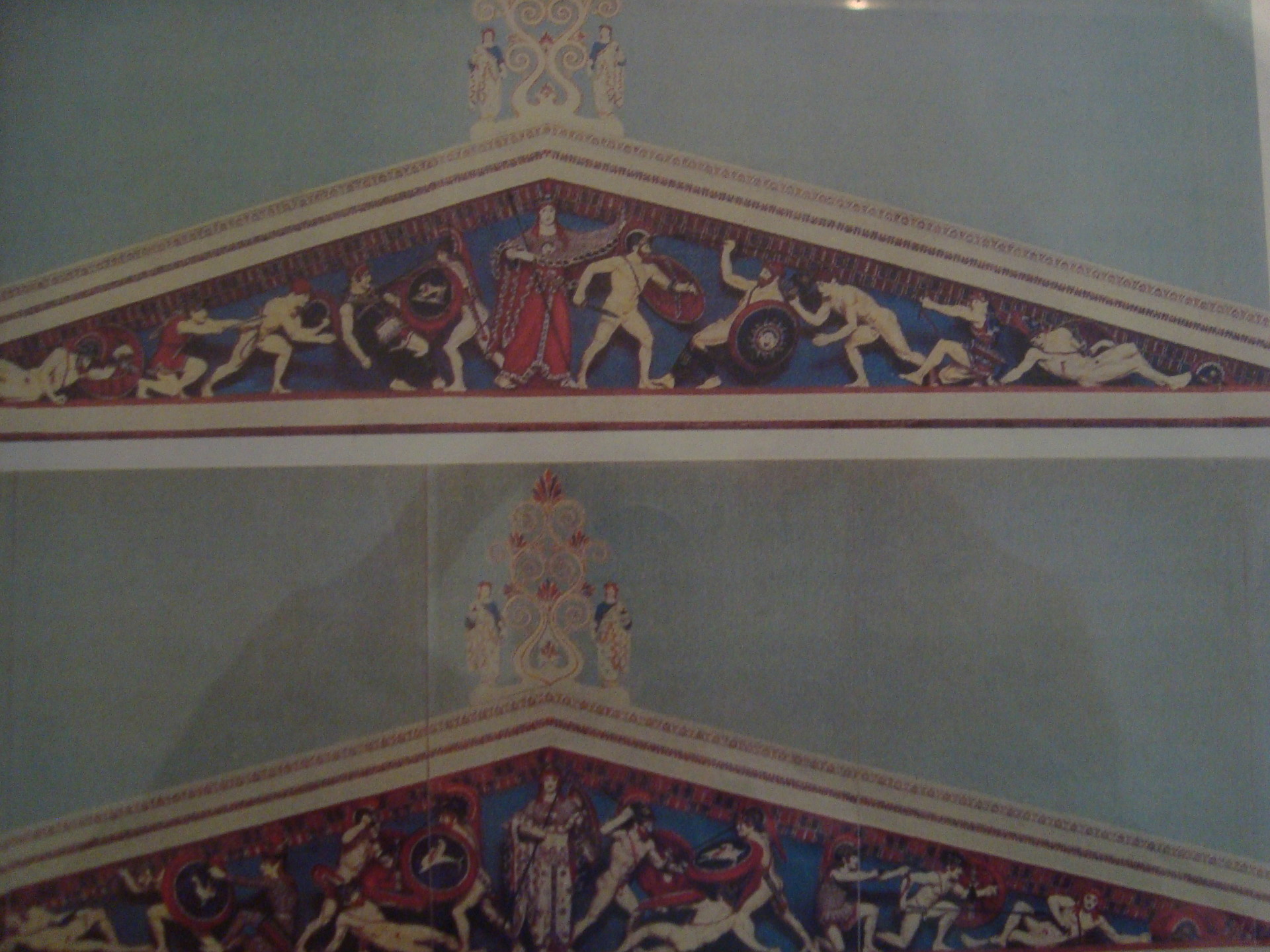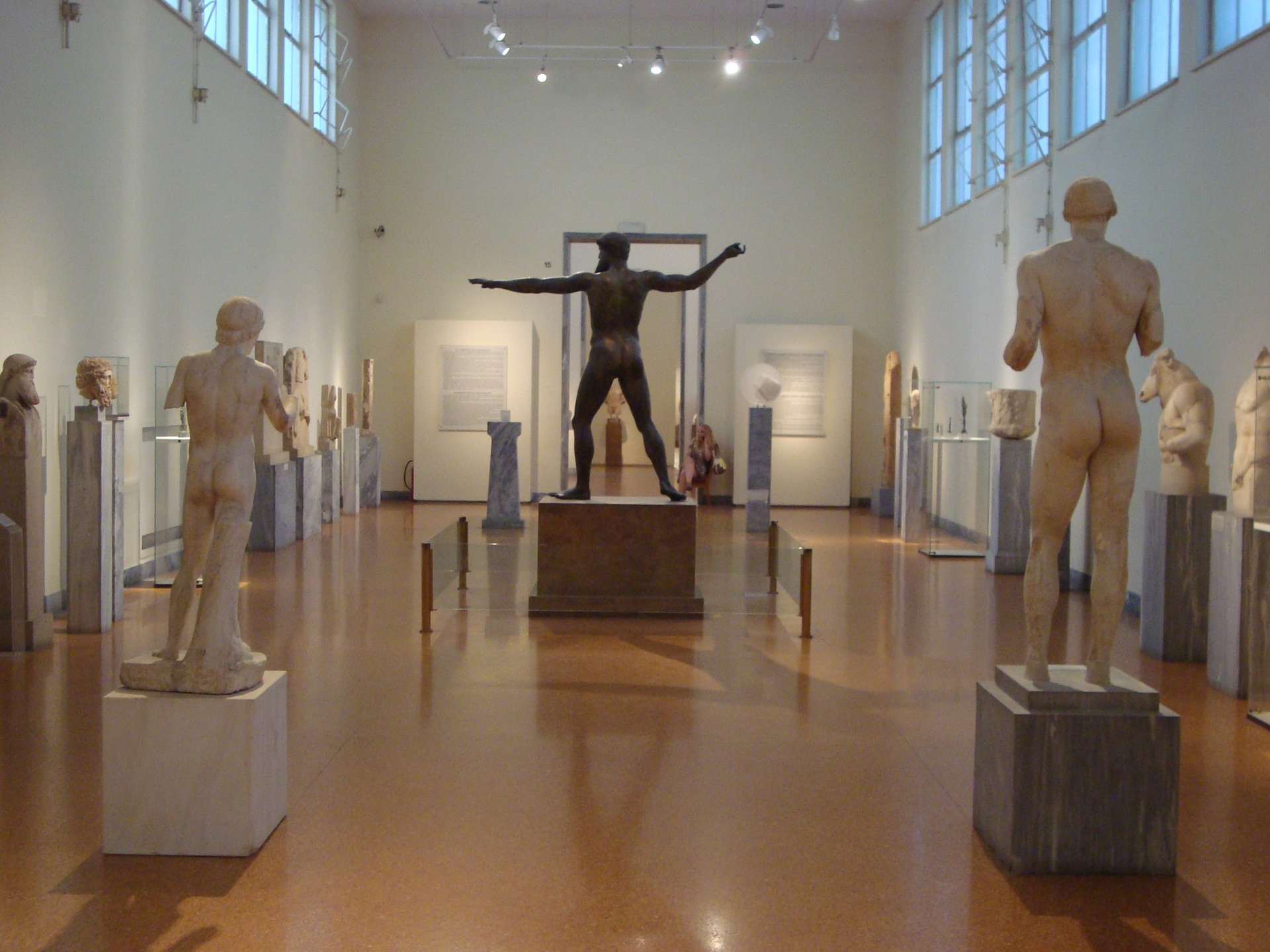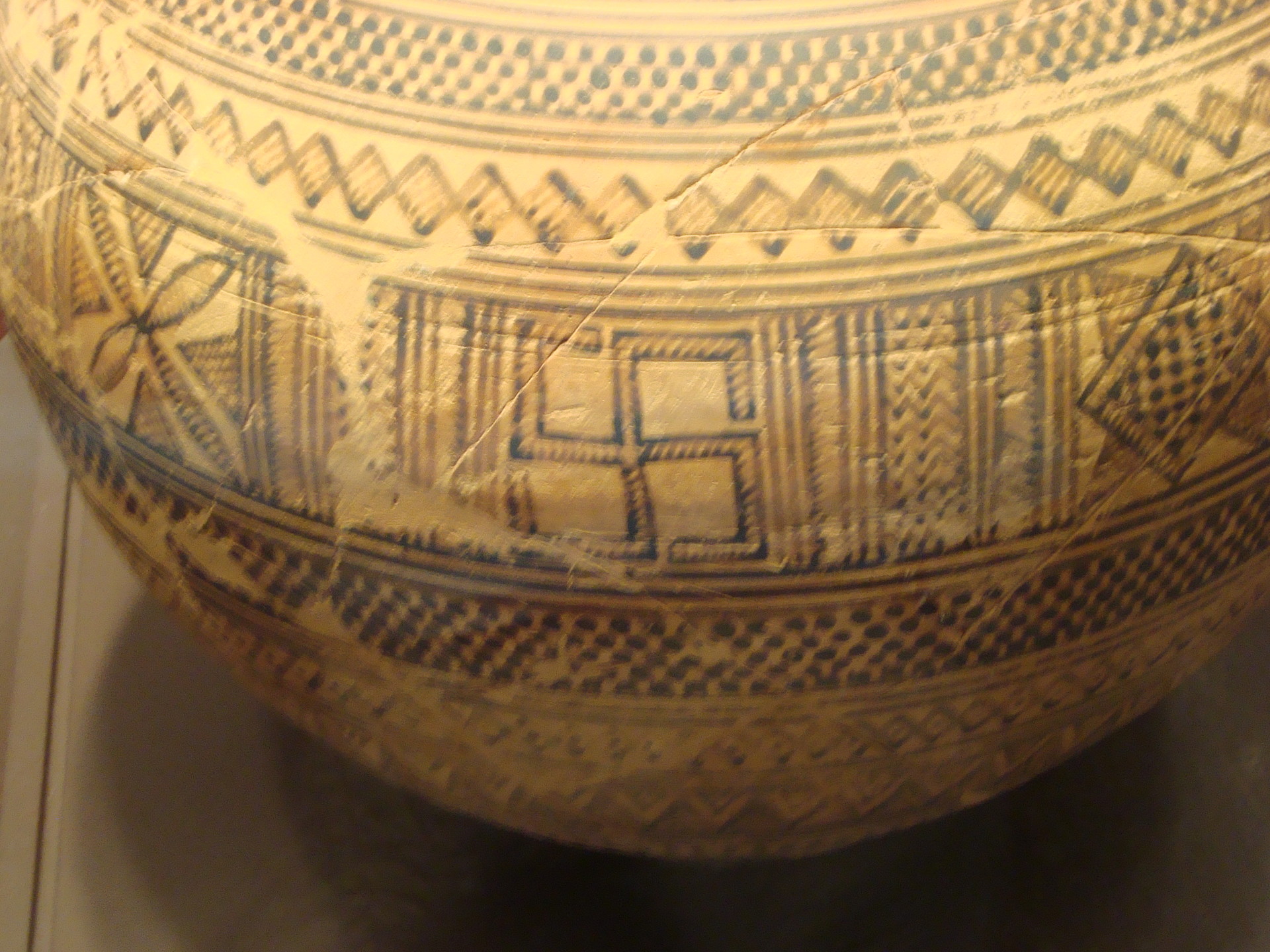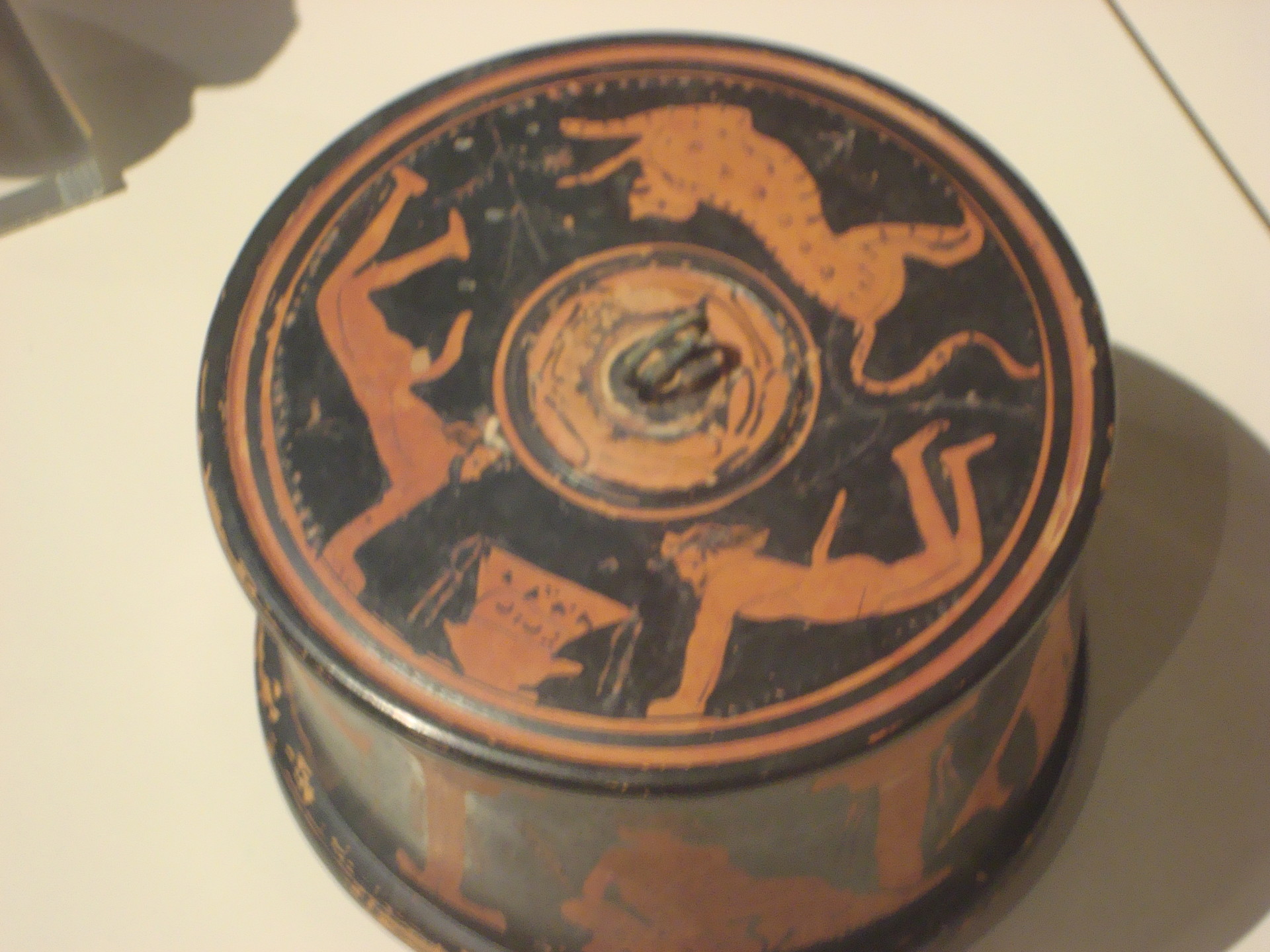National Museum of Archeology - Classical Period 2

The reconstruction of the Pantheon reliefs of the Acropolis in colour was an important work as the originals were partially destroyed by wind and weather, partly by some Christians (!) as they thought they had to do away with pagan superstitions. Also, buildings and statues from ancient times seem white to us, but only because the rich colourings have been washed off by the rain over time.

Classical sculpture distinguishes itself by biological preciseness with lifelike features and dynamic stances, as if in movement (and perfectly round butts). The famous Zeus or Poseidon statue in the middle is made of bronze and shows the god hurling a thunderbolt (lost). It is very iconic; unfortunately, the glass eyes are lost, or it would have been even more vivid.

The Archaic tradition of pottery was continued in the Classical Age; while geometrical forms with oriental influence had dominated previously (such as seen above) with the swastika as symbol of the sun (originating in Buddhism and being re-used by the Nazis), classical pottery depicted red figures on a black background or vice versa.

Here we see two satyrs (lusty creatures of the forest - half men, half bucks) with giant dicks as symbols of fertility and a leopard. Mythological figures, heroes or everyday scenes would dominate the faces of pottery in this age ... now I will continue with the Hellenistic Age.
Photo gallery
Want to have your own Erasmus blog?
If you are experiencing living abroad, you're an avid traveller or want to promote the city where you live... create your own blog and share your adventures!
I want to create my Erasmus blog! →



















Comments (0 comments)